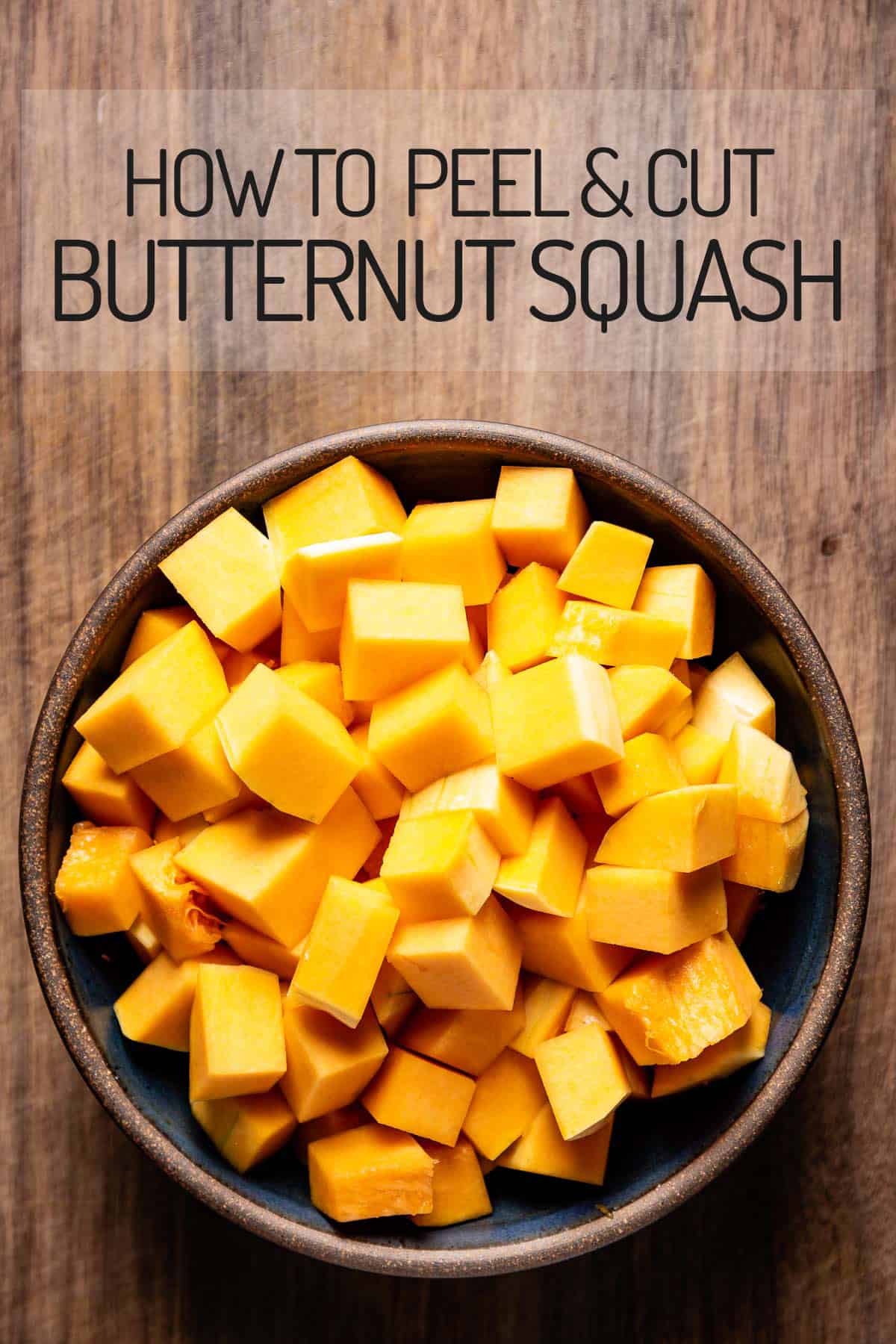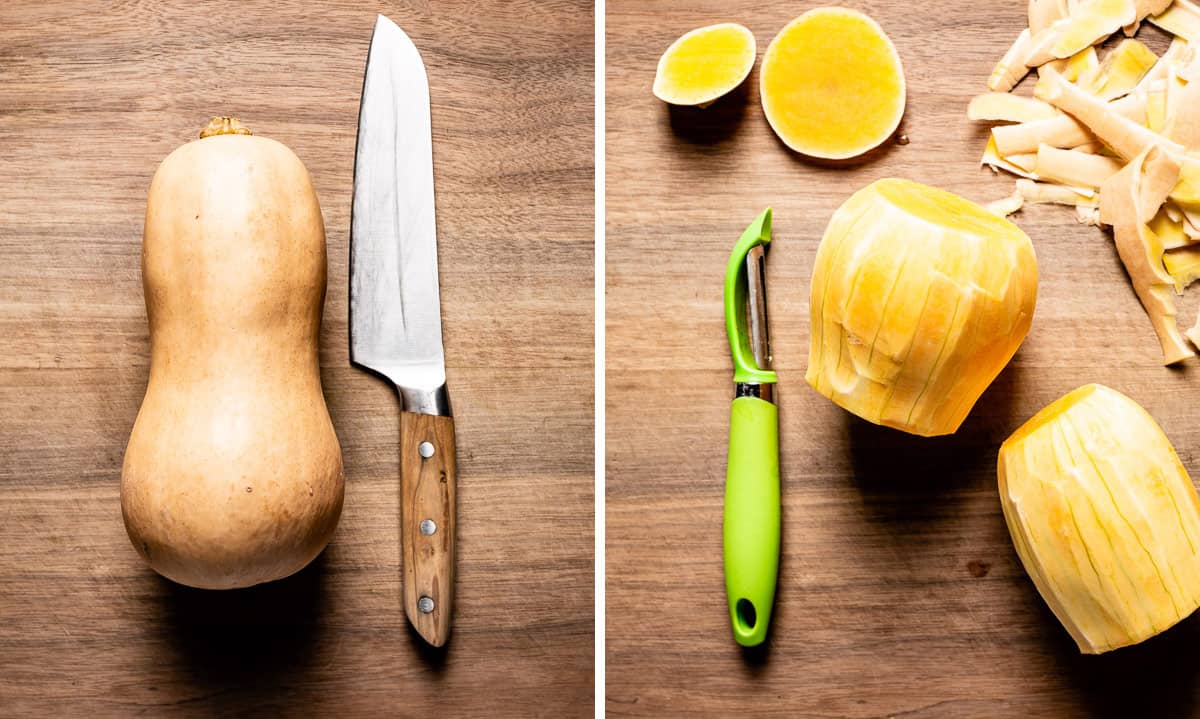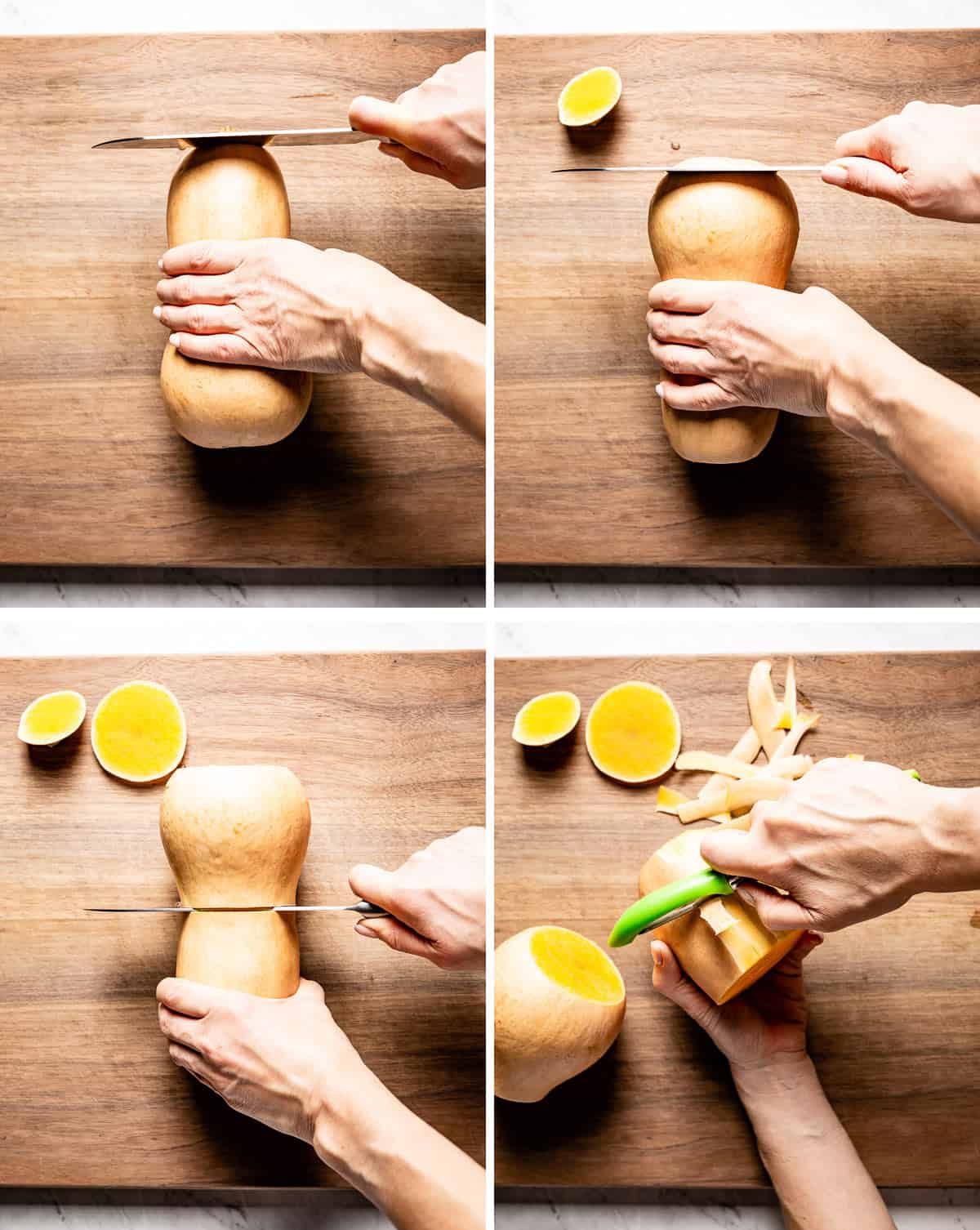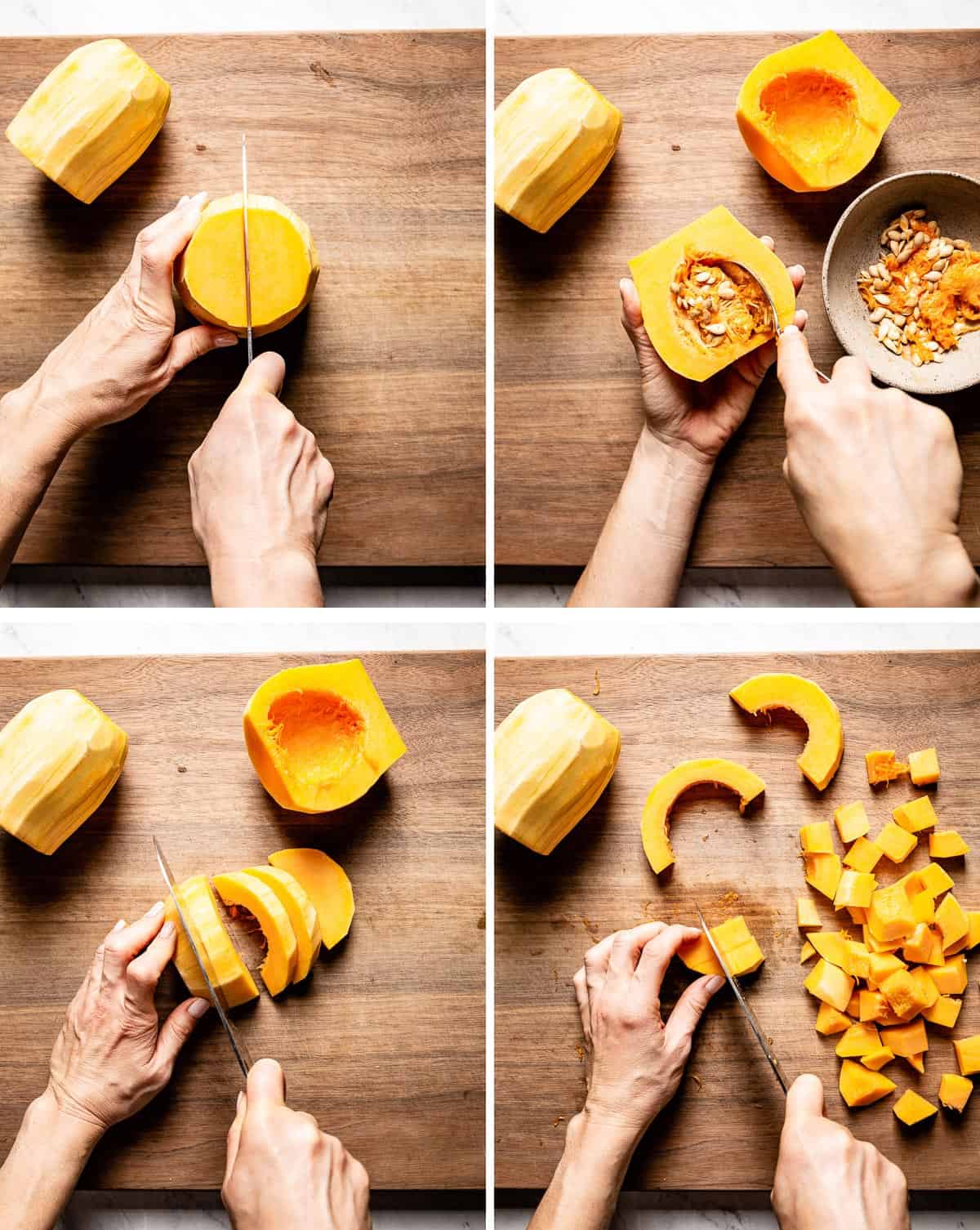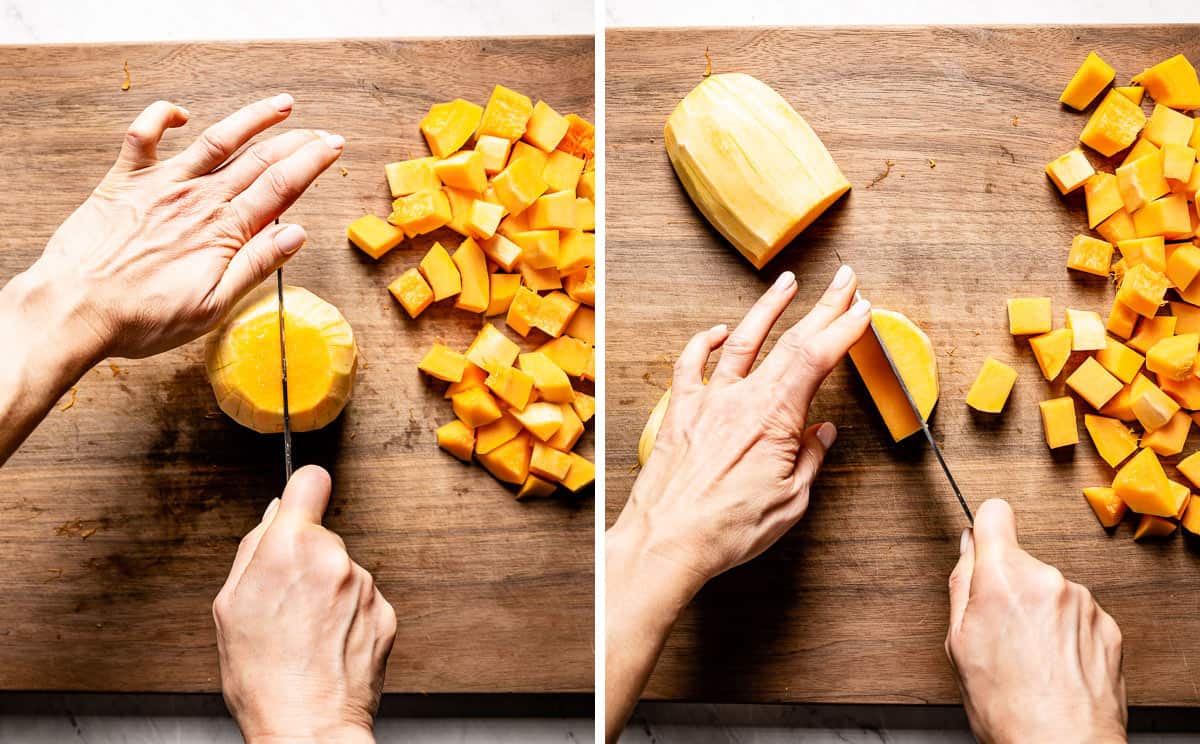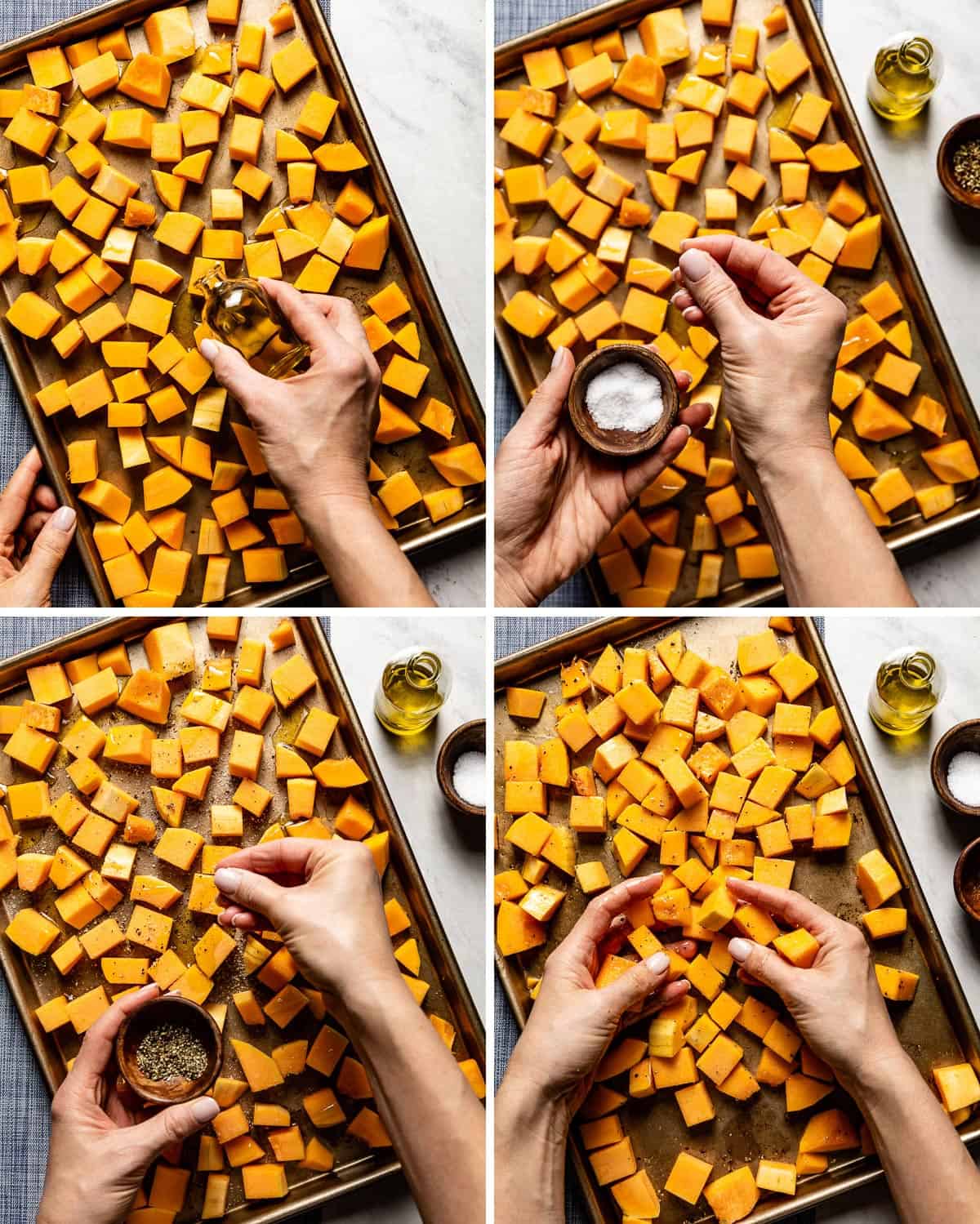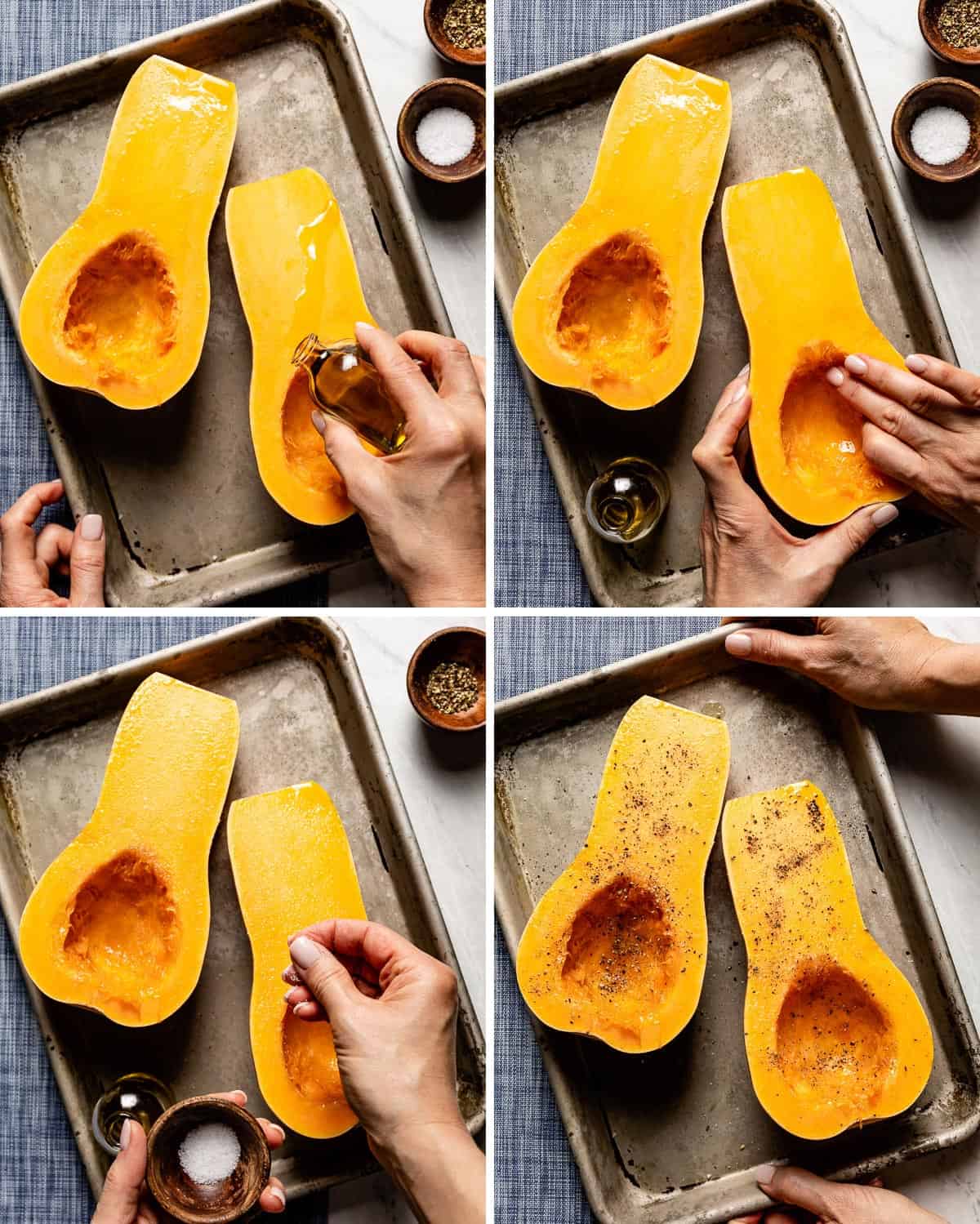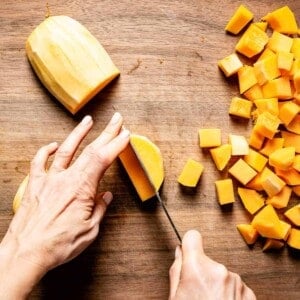The Stem should be intact: Make sure that the stem is intact. This is important as the stem helps keep it fresh for longer. If it isn’t intact, the squash may have passed its prime. It should have a dark beige/tan color: A perfectly ripened butternut squash should be dark beige with no green soft spots or streaks. The skin should be matte: The skin should be matte versus shiny (or waxy). It should also have thick skin or a hard exterior. To test, gently prick the surface with your fingernail. It should have tough skin. If it goes through easily, it may be too old. It should feel heavy for its size: Take one in your hand and make sure it is heavy for its size. Do the sound test: Tap outside the squash. If it sounds hollow, it is good to go.
Below are the tools you will need along with brands I use and recommend. The links included below are affiliate links. If you make a purchase using these links, I will earn a small commission at no cost to you.
A Sharp Chef’s Knife: You should use the sharpest knife you can get your hands on for easy and precise cutting. My favorite brand for Chef’s knives is Nakano Knife (affiliate link) with a carbon steel blade. Large Cutting Board: It is imperative to work on a sturdy and flat surface to safely cut butternut squash. I use and recommend this wooden cutting board (affiliate link). It is quite heavy and doesn’t move around as you are cutting heavy winter squash. Sharp Vegetable Peeler: Butternut squash is known to be difficult to peel because of its thick skin. I use this Kitchenaid peeler in the photos but I recently invested in this y peeler and actually think that it is the best peeler I have ever used. A large spoon or An Ice Cream Scoop: You can use a large dinner spoon or if you have one an ice cream scoop or a melon baller to scoop out the seeds easily.
Cut The Belly First:
The bottom part of the butternut squash is referred to as the belly. To cut it:
Cut the neck into cubes:
The top section of the butternut squash is usually referred to as the neck. To cut it:
Fresh Whole Butternut Squash: Store butternut squash in a cool and dark place to prevent it from ripening too fast. If stored properly, it should last two for up to three months. Uncooked cubed butternut squash: Store cut butternut squash in an airtight container or a Ziploc bag (air removed and sealed tightly) in the fridge. It should be fresh for up to 5 days.
To thaw, remove the frozen uncooked butternut squash from the freezer and let it thaw in the fridge overnight. If it is not fully thawed by the time you are ready to use it in your recipe, let it sit on the counter for a few hours until it is fully thawed. Below are some of my favorite methods of cooking butternut squash. Below, you will find a summary of each method of cooking:
Roasted Butternut Squash Cubes:
For more information, be sure to check out my post on Roasted Butternut Squash. In short, to roast butternut squash cubes:
Roasted Butternut Squash Halves:
If your recipe calls for using a whole squash, you can halve it and roast it in two pieces. For more tips, be sure to check out my post on Oven Roasted Butternut Squash Halves and Air Fried Butternut Squash Halves. To roast halved butternut squash:
Butternut Squash Noodles – This is a quick recipe where I spiralize butternut squash and serve it like spaghetti. Quinoa with Butternut Squash – An easy salad/side dish that you can make with roasted cubed butternut squash Vegan Butternut Squash Soup – A one-pan butternut squash soup that is healthy and filling at the same time. Barefoot Contessa’s Butternut Squash Salad – Ina Garten’s cult favorite, butternut squash salad served with warm cider dressing. Ottolenghi Butternut Squash Salad – Yet another celebrity chef’s salad made with squash. This one has a delicious tahini dressing that makes it even more delicious. Butternut Squash Thai Curry – A big bowl of curry goodness enhanced with red lentils and Thai curry paste. This delicious curry/soup recipe is vegan and gluten free.

